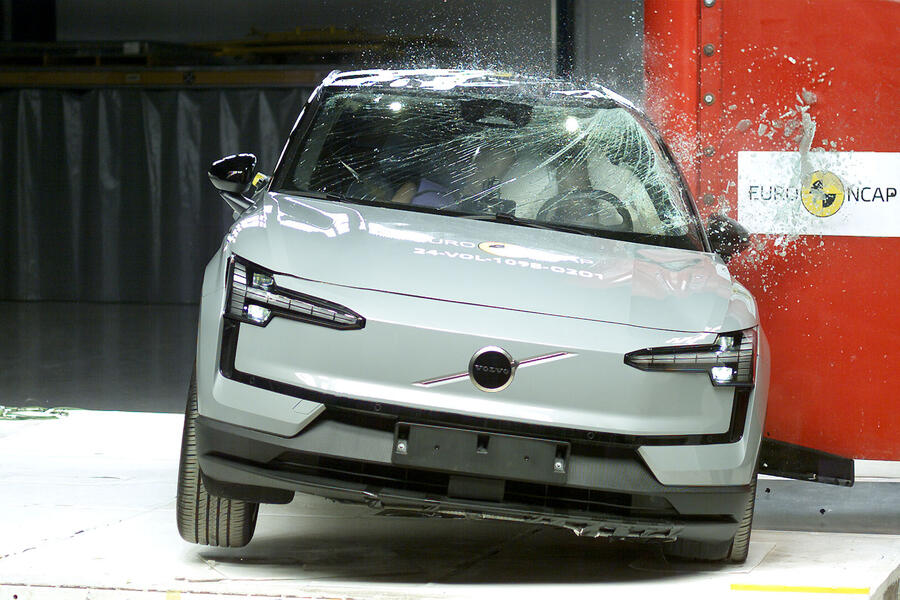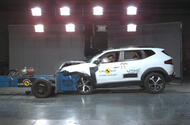This post was originally published on Autocar
Citroën and Dacia bosses question need for tougher tests as new rules announced
The bosses of Citroën and Dacia have warned that increasingly stringent car safety standards are threatening the affordability of their models – but safety test bodies say the rules are an important indicator for buyers as roads get ever busier and cars become more complex.
Citroën’s Thierry Koskas and Dacia’s Denis Le Vot have said that while they accept governmental efforts to improve vehicle safety each year (within the European Union’s GSR2 legislative framework), the higher standards set by testing bodies such as Euro NCAP are out of step with consumers’ expectations.
Key to this are the safety test ratings. Vehicles can score up to fi ve stars, which, according to Euro NCAP, tell a buyer how safe a car is. From next year, in order to achieve the top rating, a car must show “overall excellent performance in crash protection and be well equipped with state-of-the-art crash avoidance technology”. This includes both passive safety systems (such as airbags, seatbelts and crumple zones) and active ones (advanced driver assistance systems).
Current five-star cars include the £54k MercedesBenz E-Class and the £35k Skoda Superb.
The rating system is set to be made stricter in 2026.
Koskas and Le Vot argue that in order to hit affordable price points, they are not able to fit the expensive “state-of-the-art” safety tech demanded by the highest ratings. For example, Dacia’s new £18k Duster (the cheapest SUV on the market) was given three stars by Euro NCAP.
We have nothing against NCAP,” said Le Vot recently, “but when this active safety race for stars came, we were not into that. We were saying at the time: ‘We are not chasing the stars, we are not chasing the stars, we are not chasing the stars.’
“We care much about passive safety, of course. We follow regulations one by one by one. But this is NCAP [miming a staircase] and this is regulation [miming another below that]. So we are more on the regulation [staircase].
The level of safety our cars are giving is great. It’s maybe not the high post in terms of a Euro NCAP score, but it’s great.”
Koskas agreed: “Our position is very simple: it’s our mission just to comply with regulations that are already at a very high standard. The governments take care of their people; they put what is necessary to them in terms of regulation; and I do not see any need to go further.”
However, Euro NCAP board member and Thatcham Research chief technical offi cer Richard Billyeald argues that the higher standards demanded by regulators, and the star ratings that come attached to them, are important to buyers of new cars.
“Euro NCAP has always pushed way beyond legislation, and that’s what it’s designed to do,” he said. “Legislation has to be a very low bar: it has to be quite broad and pick up on the fundamentals. Euro NCAP pushes technology. It is about what is possible, what can the technology do to push the safety envelope, to improve things.”
Nevertheless, Billyeald agreed that it is more of a challenge for car makers such as Citroën and Dacia that are pushing for a lower price point. He argued that while they can’t fit systems that “have all the bells and whistles”, they could “target [safety] in different places”, such as in terms of usability.
With reference to star ratings, Billyeald added: “I think you do need that simplicity. For example, my mum is not going to buy a car based on [test] percentages; she’s going to look at the star rating and inherently know what that means. So I think the concept is absolutely right.”
However, the speed at which technology is evolving means cars – like smartphones – are becoming outdated quickly in the eyes of regulators, according to Koskas. This means that unless manufacturers make costly alterations, cars will have their safety ratings reduced.
“Look at the previous-generation C3,” he said. “It had a four-star rating, but now it would be a zero-star car. This does not mean that the car is not safe; it just means the barrier for safety has increased.”
Another criticism is how these active safety systems are presented at a user level. For example, Autocar’s testers have been critical of some ADAS, especially those that monitor the driver’s behaviour and identify posted speed limits.
While new cars are legally required to have these systems fi tted, some car manufacturers – including Citroën and Dacia – fit buttons that allow drivers to turn the systems off, if only for the duration of that particular journey.
“I would happily make a bet on what percentage of customers press that button,” said Koskas. “I have to confess that every time I drive my ë-C4, I turn it off, because it’s just annoying.”
This is something that is understood by the regulators, said Billyeald, and is an area they are working on.
“We want drivers to use those systems,” he said. “There’s nothing inherently wrong with the technologies and with the intention of the technologies; it is about how usable they are. So let’s maximise the safety benefi ts, the driver support, minimise the distraction and the wanting to turn things off.”
Euro NCAP sharpening tech focus

From January next year, the safety barrier set by Euro NCAP will rise again. The new regulations will expand the current evaluation beyond crash scenarios to include driver engagement, assistance systems and emergency response capabilities.
To do this, Euro NCAP is set to introduce assessments across four categories: Safe Driving (driver monitoring and vehicle assistance), Crash Avoidance (systems that actively prevent collisions), Crash Protection (occupant safety) and Post-Crash Safety (assessment of eCall emergency response systems).
Euro NCAP says these updates form part of its commitment to Vision Zero – a strategy to eliminate traffic-related fatalities – and aim to align safety assessments with the latest advances in vehicle technology.
What Euro NCAP ratings actually mean
Five stars: Overall excellent performance in crash protection and well equipped with state-of-the-art crashavoidance technology.
Four stars: Overall good performance in crash protection and prevention but does not reach the highest standards in all key areas.
Three stars: A vehicle that provides an average level of safety performance, offering a medium standard of safety and protection.
Two stars: Nominal crash protection but below-average performance in one or more key areas.
One star: Marginal crash protection and minimal crash-avoidance technology beyond the legal requirements.
Zero stars: Meeting legally required type-approval standards so can legally be sold but lacking critical safety technology.

